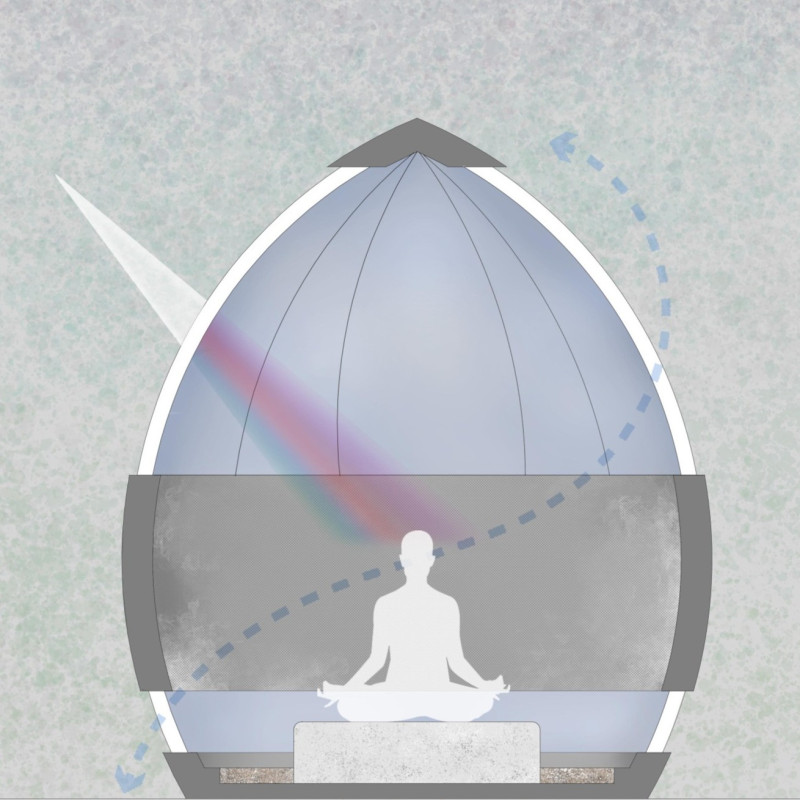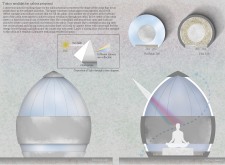5 key facts about this project
Tokyo Meditation Cabins is located in an urban setting, designed as a space for meditation and self-reflection. Its cabin structure embodies the essence of human auras, representing the spiritual connection people experience during meditation. The design merges nature with thoughtful architecture, creating a calming environment that encourages personal contemplation.
Spatial Configuration
The cabin’s unique shape symbolizes the aura that surrounds individuals, connecting the physical structure to spiritual experiences. This distinct form invites users to engage more deeply with their surroundings. The design accommodates various meditation styles, reinforcing the idea that space can influence personal well-being.
Light and Ventilation
Upper windows made of glass prism material allow sunlight to enter and scatter in different colors throughout the interior. This approach creates a warm and inviting atmosphere. Lower windows have been placed to ensure natural ventilation, providing fresh air that supports a peaceful setting for meditation.
Natural Environment
At the center of the cabin, a base offers flexibility for individuals to meditate in various positions. Surrounding this area, carefully positioned stones and rocks create a natural ambiance. This arrangement deepens the connection with the earth, helping users to feel grounded and centered during their meditative practices.
Cultural Resonance
A sliding door serves as the entrance, reflecting aspects of traditional Japanese residential design. This element adds cultural context and enhances the experience of entering the cabin. The design creates a transition from the outside world into a peaceful interior, enriching the overall atmosphere of tranquility and reflection.
The design of Tokyo Meditation Cabins emphasizes the importance of light, natural materials, and cultural elements, inviting users to experience an atmosphere crafted for contemplation and peace.























